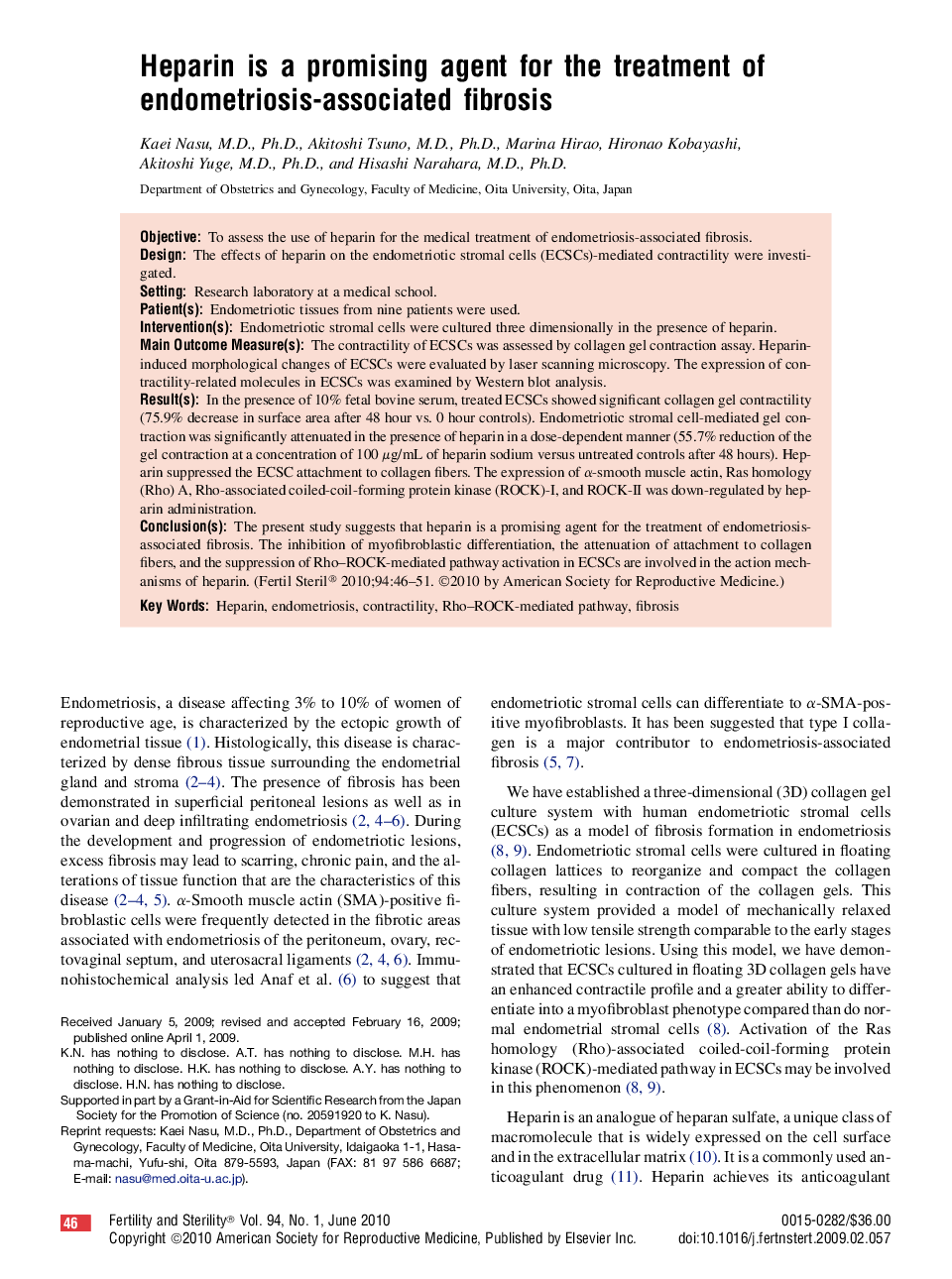| کد مقاله | کد نشریه | سال انتشار | مقاله انگلیسی | نسخه تمام متن |
|---|---|---|---|---|
| 3936225 | 1253440 | 2010 | 6 صفحه PDF | دانلود رایگان |

ObjectiveTo assess the use of heparin for the medical treatment of endometriosis-associated fibrosis.DesignThe effects of heparin on the endometriotic stromal cells (ECSCs)-mediated contractility were investigated.SettingResearch laboratory at a medical school.Patient(s)Endometriotic tissues from nine patients were used.Intervention(s)Endometriotic stromal cells were cultured three dimensionally in the presence of heparin.Main Outcome Measure(s)The contractility of ECSCs was assessed by collagen gel contraction assay. Heparin-induced morphological changes of ECSCs were evaluated by laser scanning microscopy. The expression of contractility-related molecules in ECSCs was examined by Western blot analysis.Result(s)In the presence of 10% fetal bovine serum, treated ECSCs showed significant collagen gel contractility (75.9% decrease in surface area after 48 hour vs. 0 hour controls). Endometriotic stromal cell-mediated gel contraction was significantly attenuated in the presence of heparin in a dose-dependent manner (55.7% reduction of the gel contraction at a concentration of 100 μg/mL of heparin sodium versus untreated controls after 48 hours). Heparin suppressed the ECSC attachment to collagen fibers. The expression of α-smooth muscle actin, Ras homology (Rho) A, Rho-associated coiled-coil-forming protein kinase (ROCK)-I, and ROCK-II was down-regulated by heparin administration.Conclusion(s)The present study suggests that heparin is a promising agent for the treatment of endometriosis-associated fibrosis. The inhibition of myofibroblastic differentiation, the attenuation of attachment to collagen fibers, and the suppression of Rho–ROCK-mediated pathway activation in ECSCs are involved in the action mechanisms of heparin.
Journal: Fertility and Sterility - Volume 94, Issue 1, June 2010, Pages 46–51